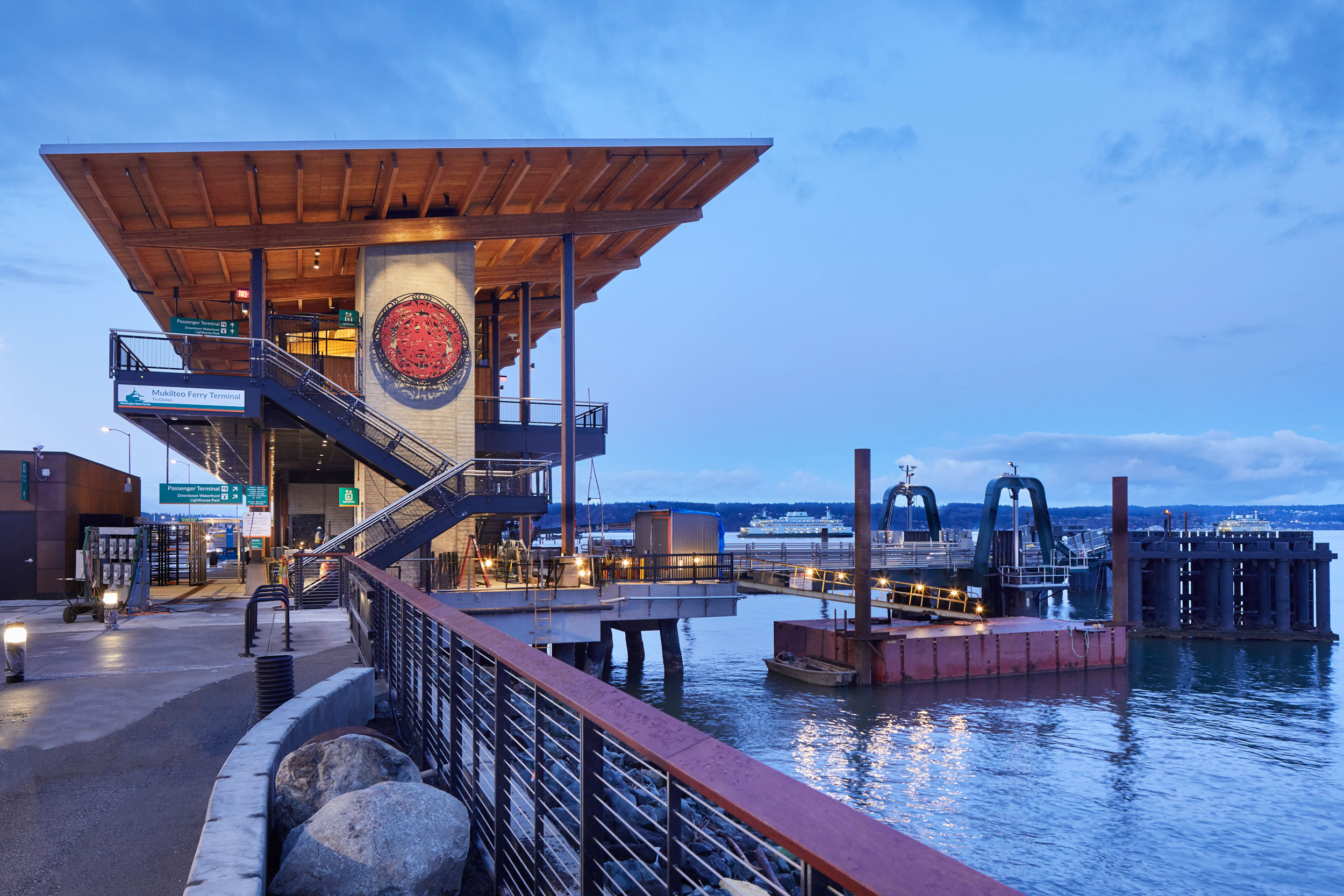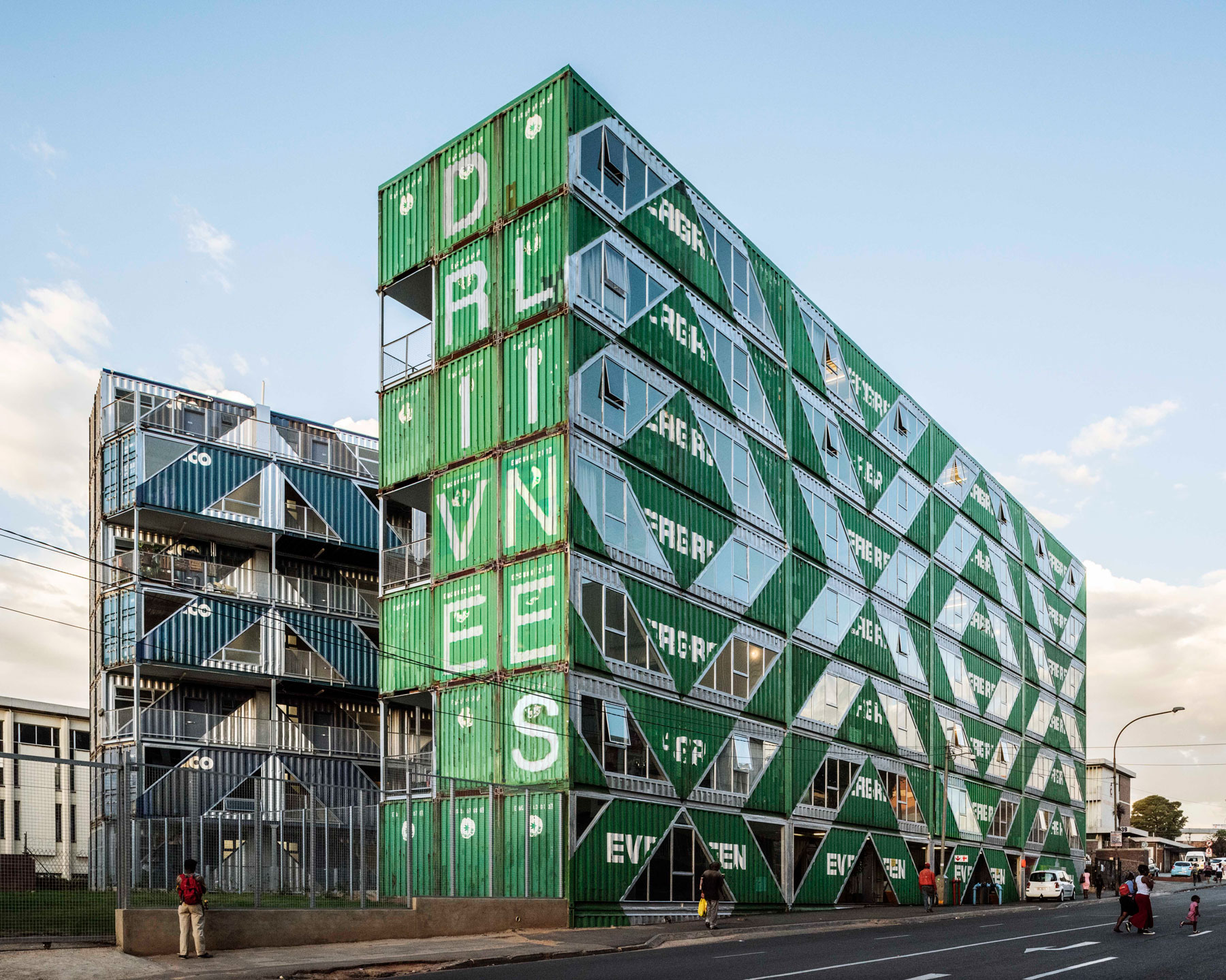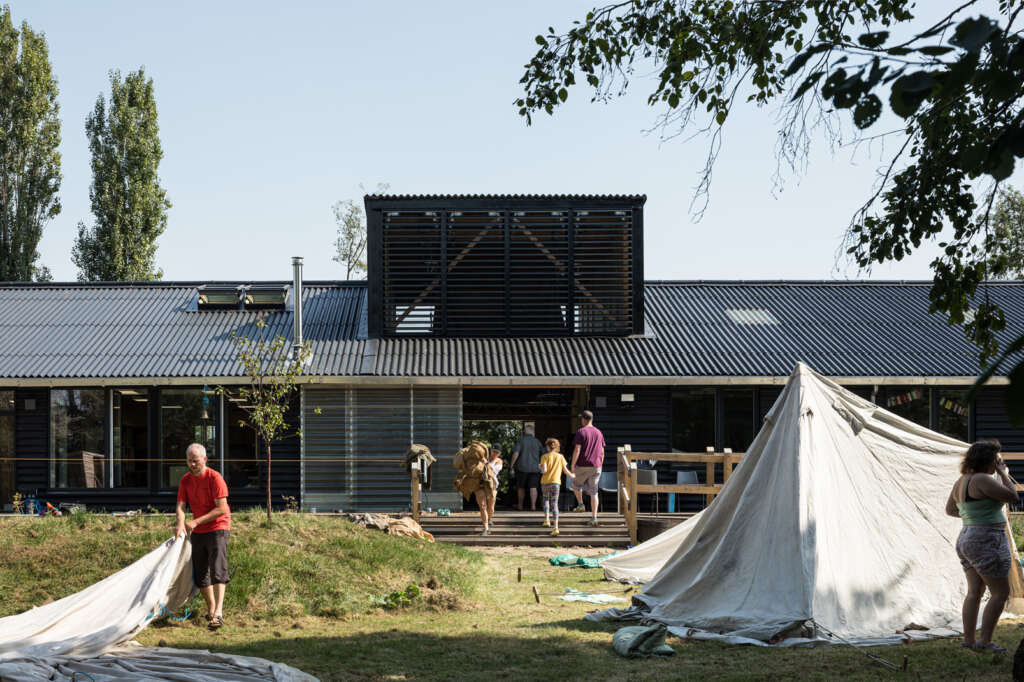
The Big Roof
Architect: Mole Architects, Invisible Studio
Location: Cambridgeshire, England
Type: Storage and Training Centre
Year: 2023
Photographs: David Butler
Forest School Camps Storage and Training Centre, Cambridgeshire
The following description is courtesy of the architects. The arrival of The Big Roof – a new low-carbon, low-energy storage and training centre in the Cambridgeshire Fens – has been transformational for Forest School Camps (FSC), improving operations of the nationwide volunteer-run charity which provides educational camps for children.
The single-storey, 745m² multipurpose building, designed by Mole Architects and Invisible Studio, replaces three buildings in various states of disrepair incorporating storage, repair bays, cooking, eating and teaching space under one roof, creating a central hub for the grass-roots charity.
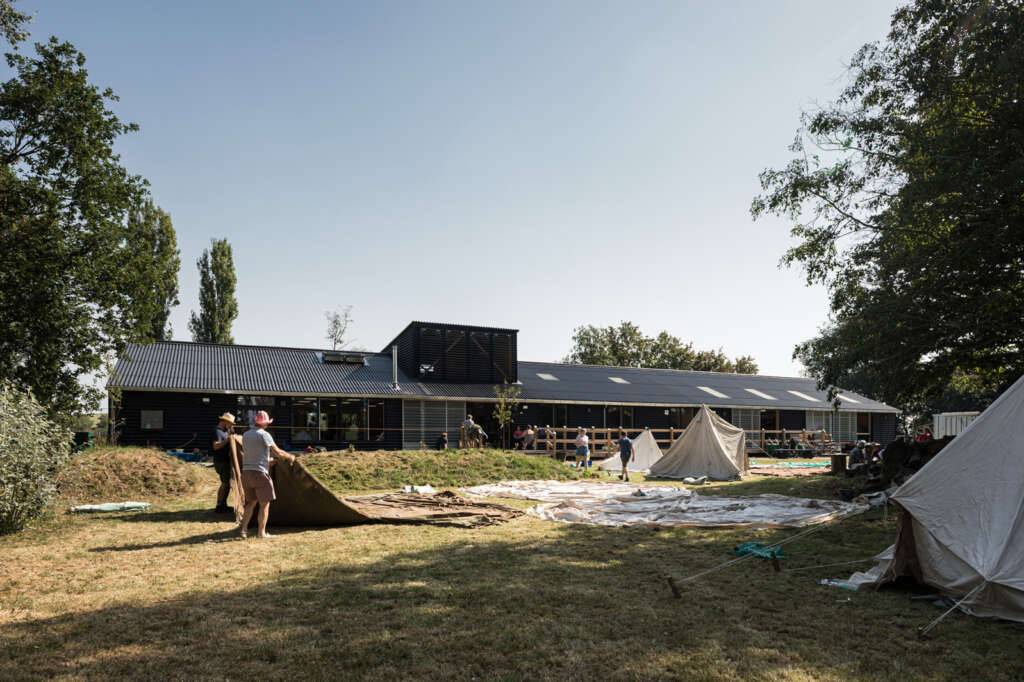
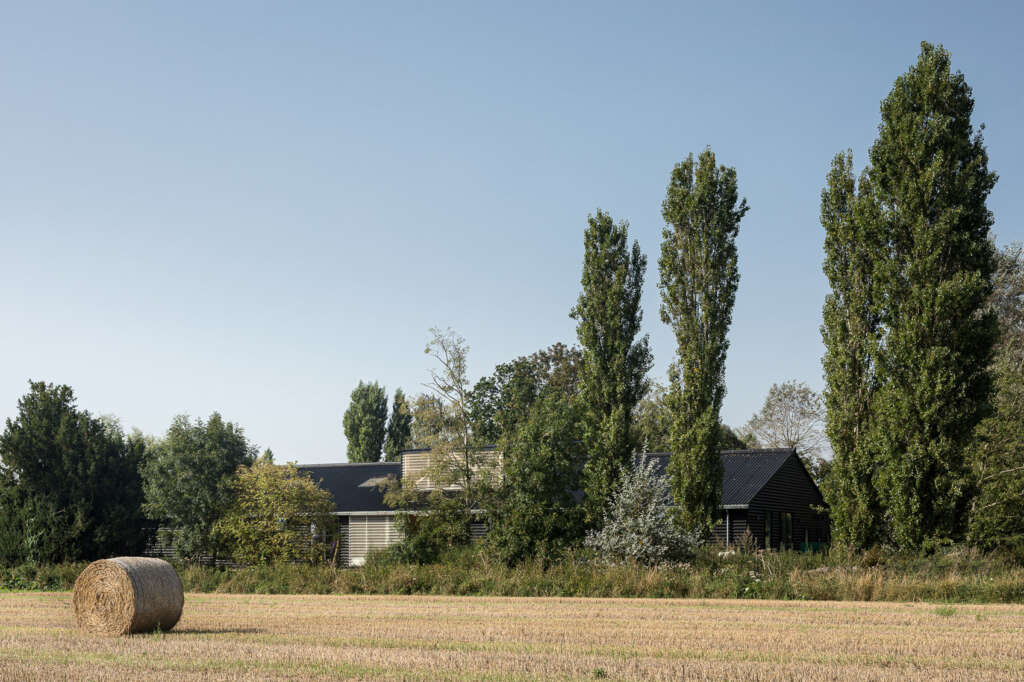
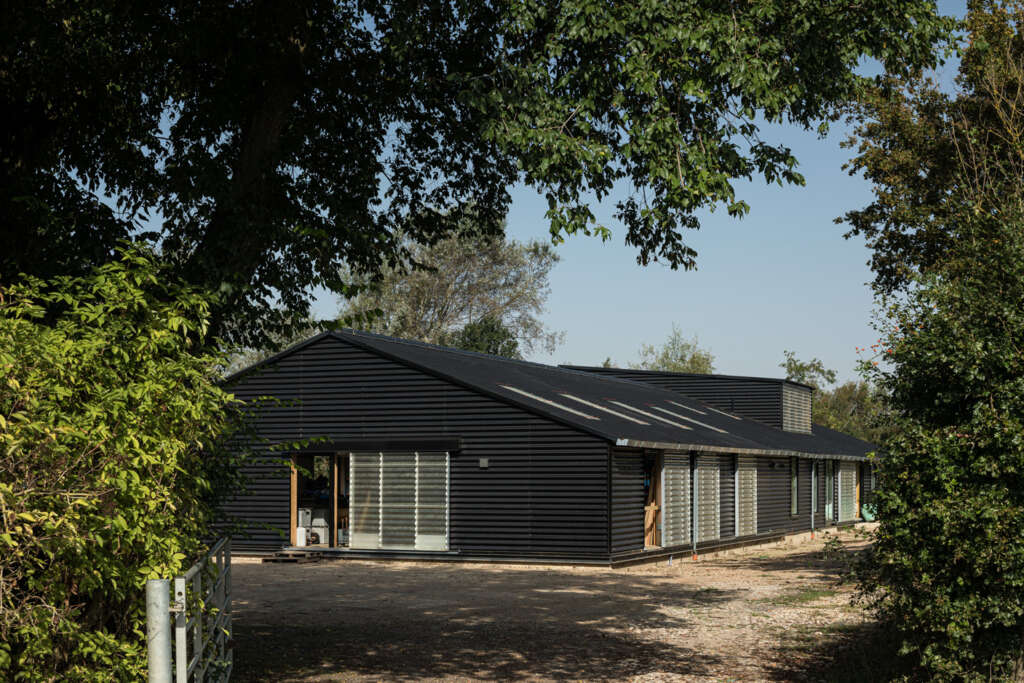
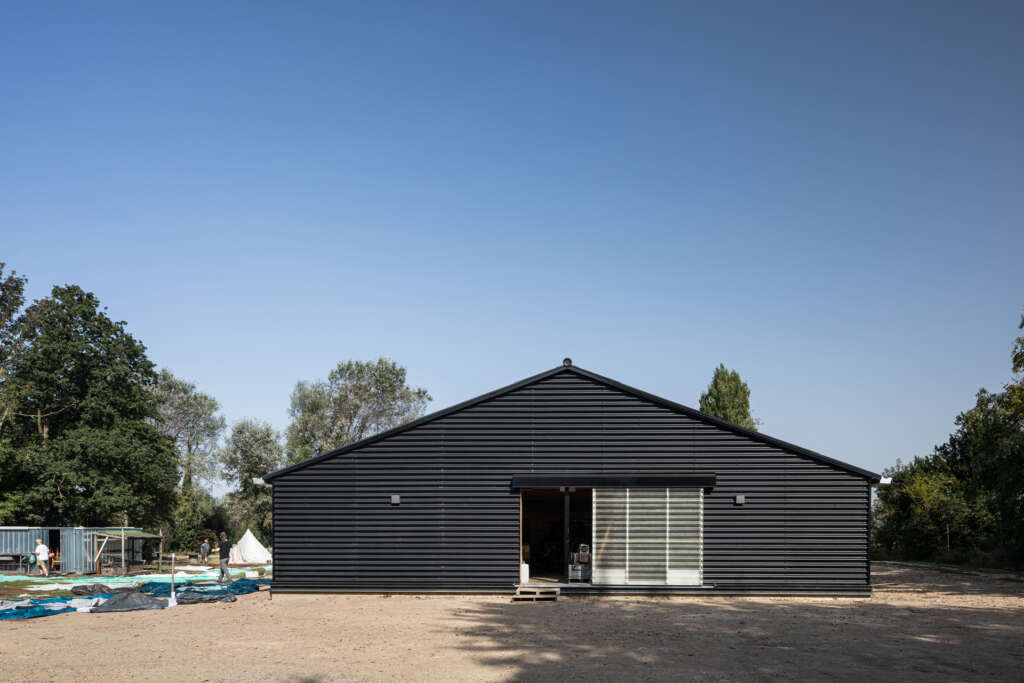
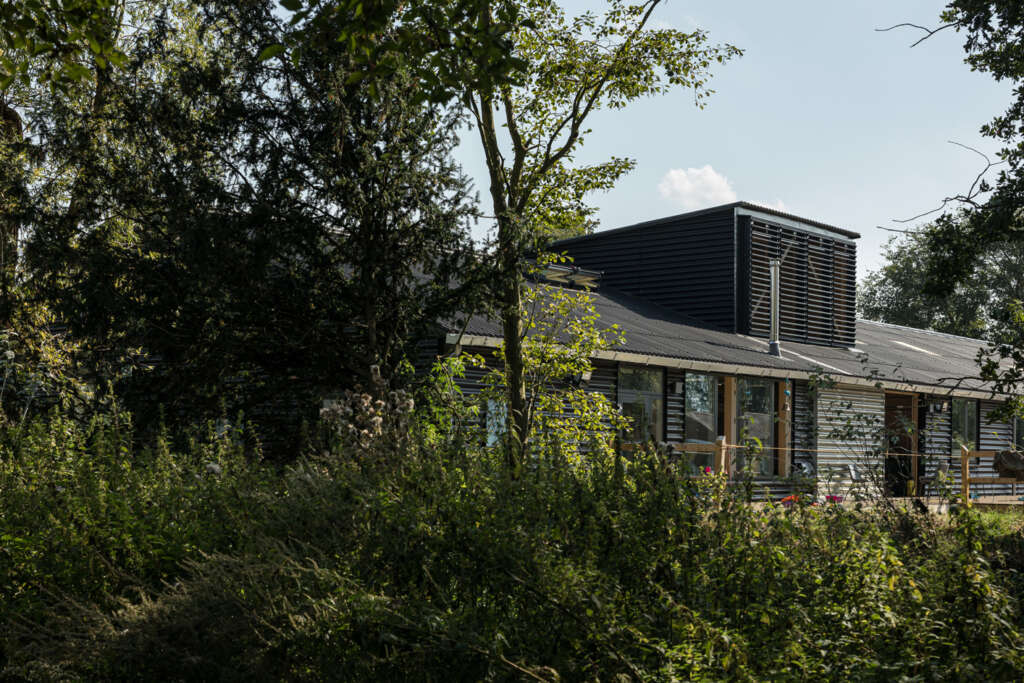
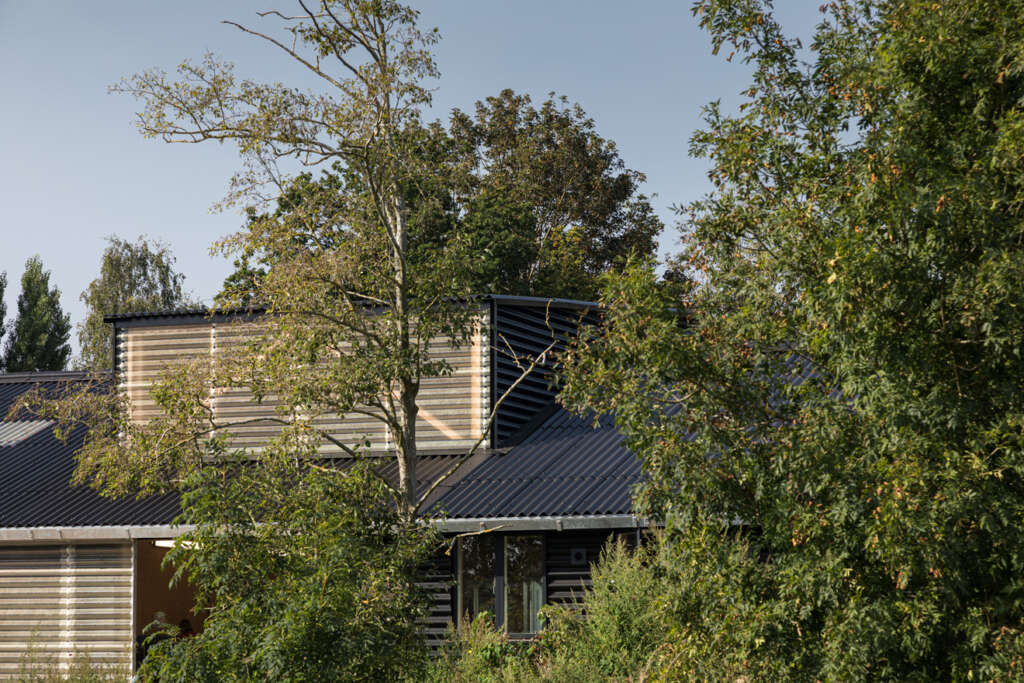
Forest School Camps was started by former pupils from the Forest School in the New Forest in 1947; in 1978 FSC purchased this land in Haddenham to serve as a base, where they planted a wood and made a campsite alongside the agricultural sheds that served as the Stores. Dedicated volunteers run summer camps and shorter weekend camps during the year to help children gain life and social skills, and to learn by doing.
Many of the volunteers have grown up within the organisation, and have developed lifelong bonds with FSC.
The undertaking for a volunteer charitable organisation was significant, and the brief ambitious. The cost of the building exceeded the available funds, yet FSC supporters and members rallied to the challenge and raised what was needed to complete the robust, low maintenance community building which demonstrates generous simplicity. Every stage of the project – from design to completion – has contributed a sense of belonging and identity, and supported community resilience. The Big Roof’s design, natural material palette and focus on shared activities perfectly reflect the ethos of the FSC: democratic, inclusive, communal.
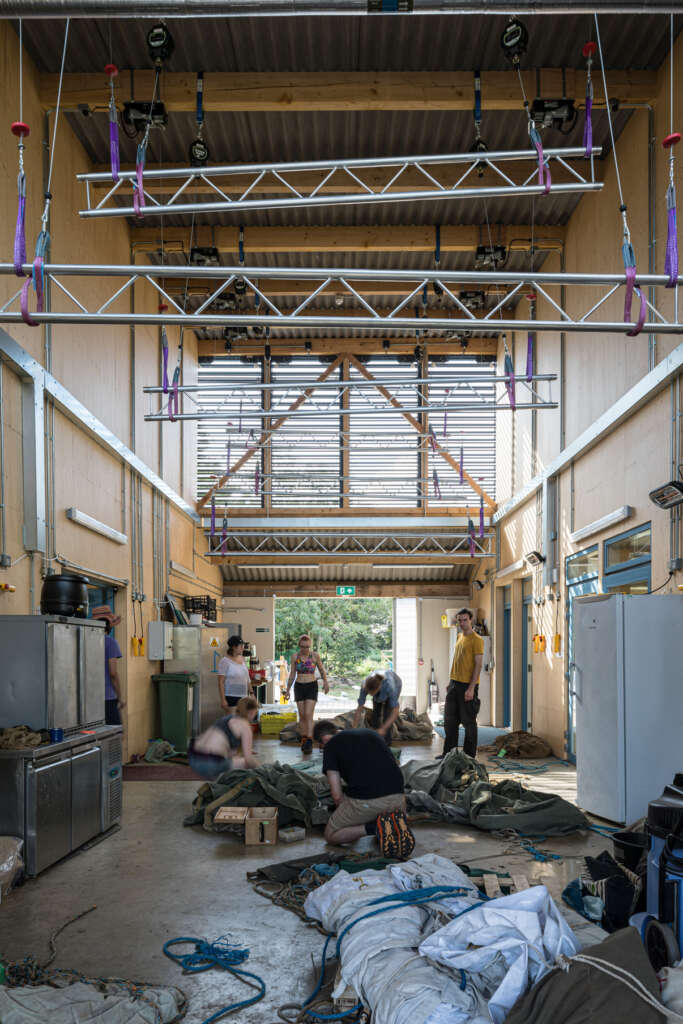
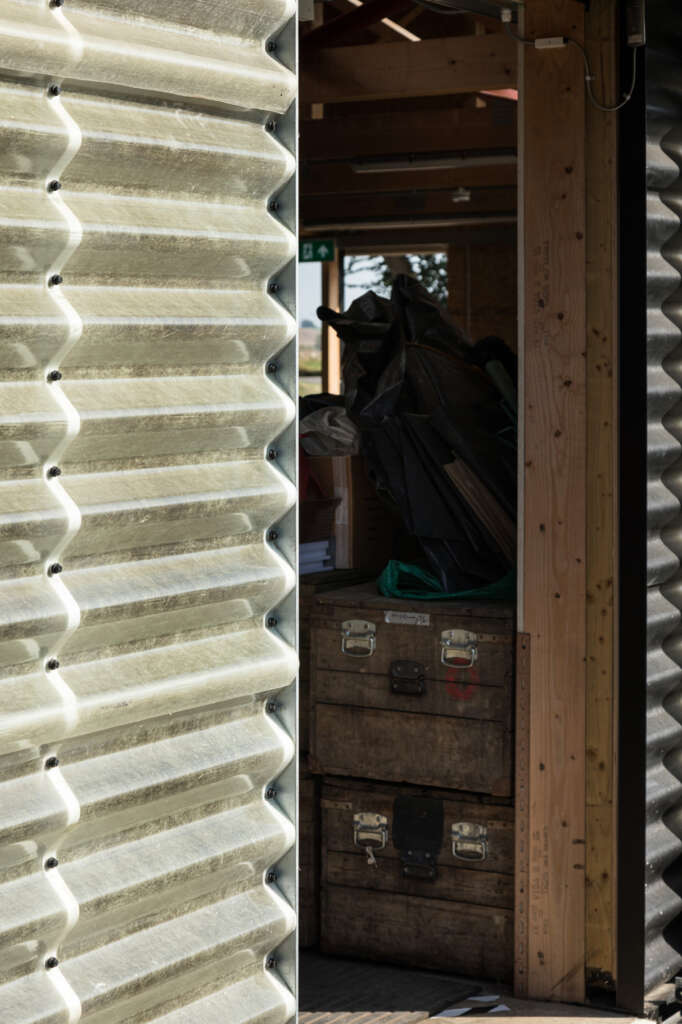
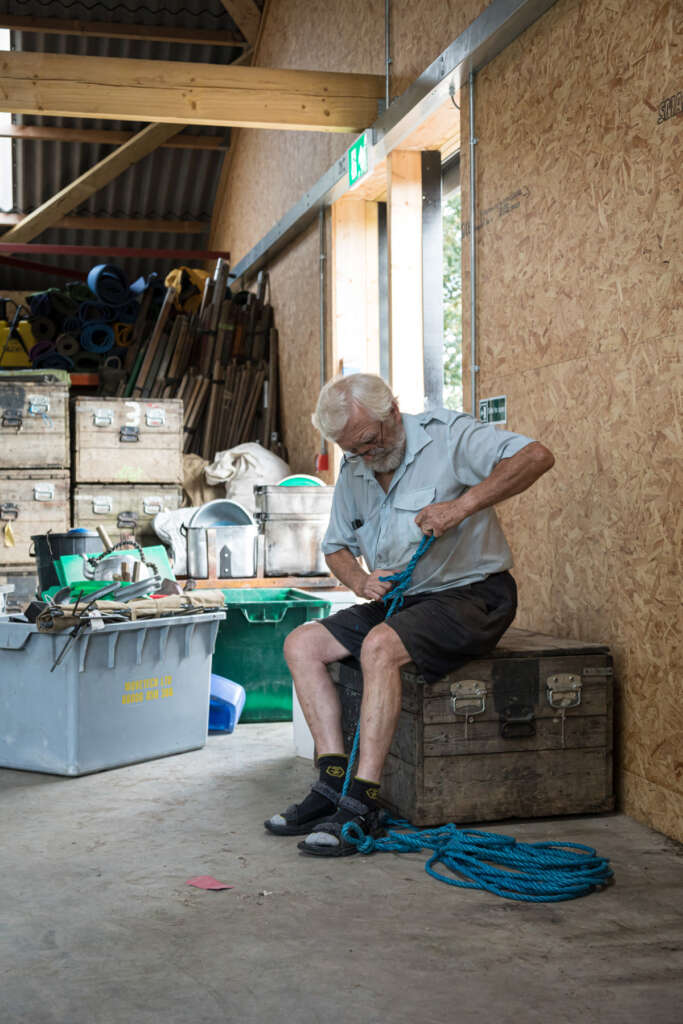
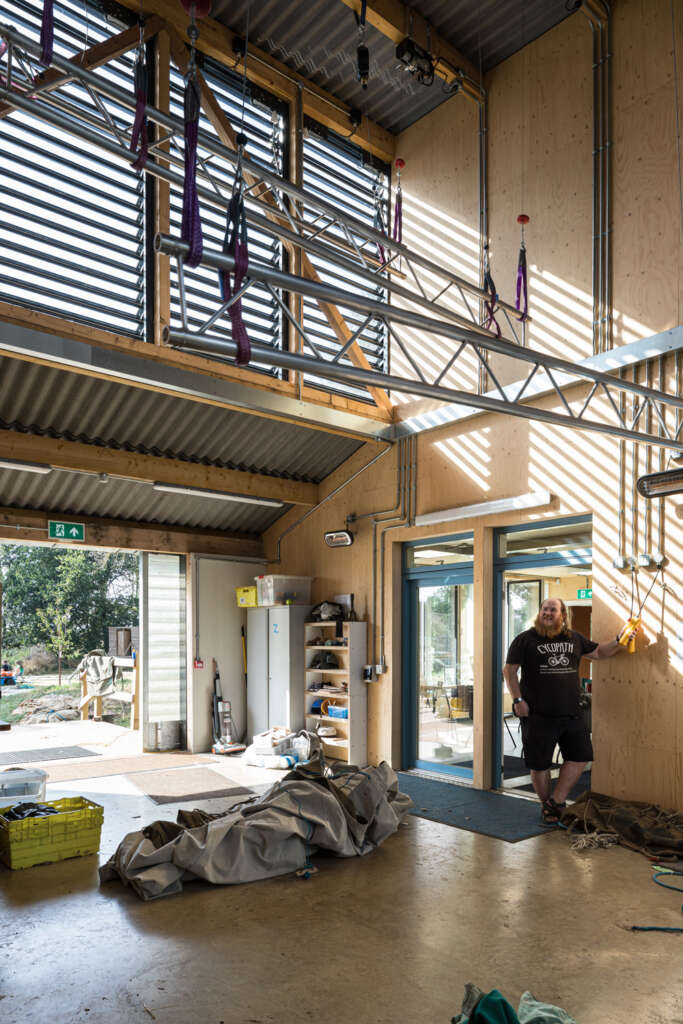
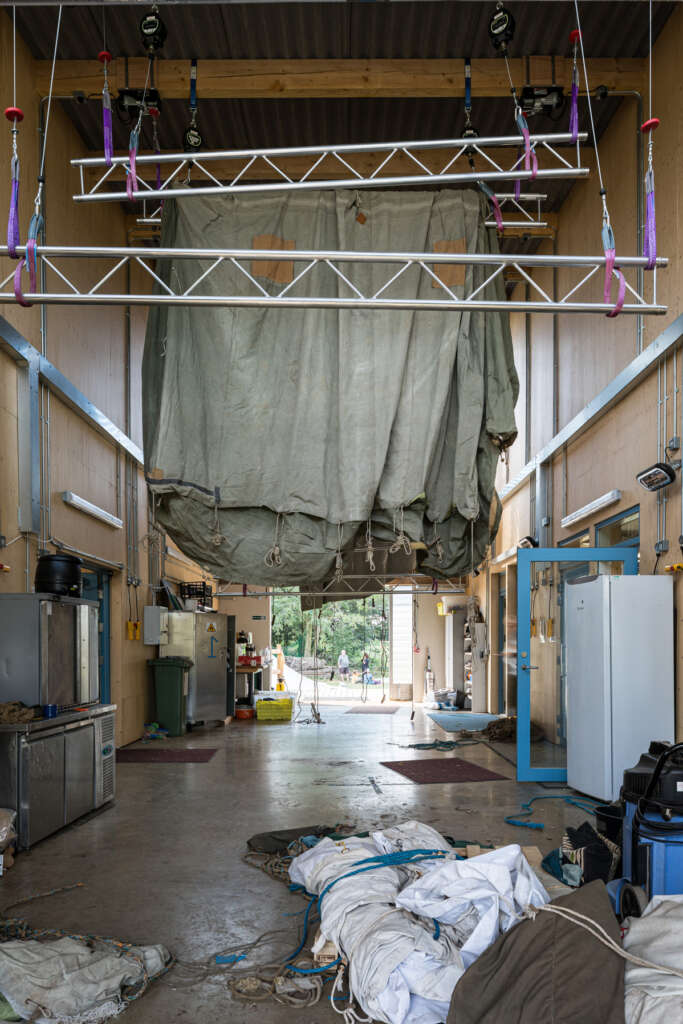
The energy-efficient building, which stands on an exposed site, is clad entirely in black corrugated fibre cement, with translucent fibreglass for doors and rooflights giving abundant interior light. The resource-efficient design minimises the use of steel and maximises natural materials. The timber frame structure is clad in cement fibre corrugated sheets and sits above the ground on a robust concrete beam and block floor; the structure has 15m span trusses and forms a central 7m-high tent bay called ‘the lantern’, with louvres for ventilation, which is used for hanging tents to dry. With concrete screed floors, sheet linoleum flooring and ply linings, the main storage spaces are minimally designed, and they are complemented by collective spaces which are insulated (with recycled newspaper) and heated for comfort, including a kitchen, dining area, work spaces for crucial repair and maintenance work, and a flexible, discrete space for running training sessions. The design ensures high levels of daylight, thus reducing the need for artificial light and allowing everyone to see what else is going on in the building.
The Big Roof fulfils an urgent need for storage space, and provides approximately 400m² for camp equipment storage, where tents, cookware, clothing, sleeping bags and tools can now be efficiently catalogued once checked and repaired. The equipment is delivered to camping fields across the country, benefitting around 1,500 children; and the improved facilities enable FSC to run more camps (currently approximately 35 per year) and hold more of its training at the site.
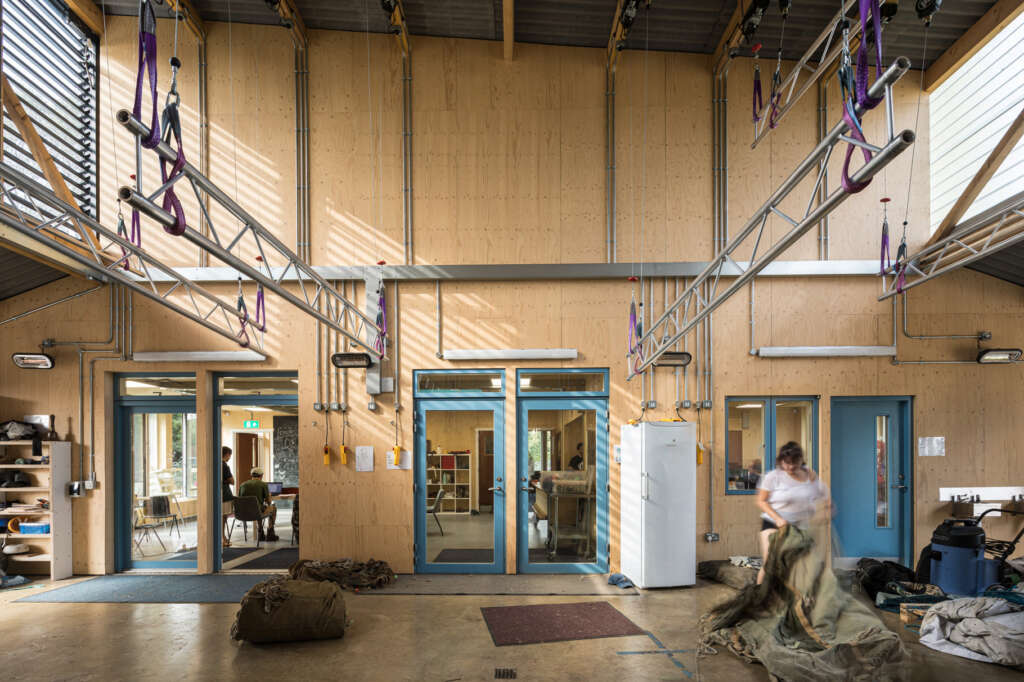
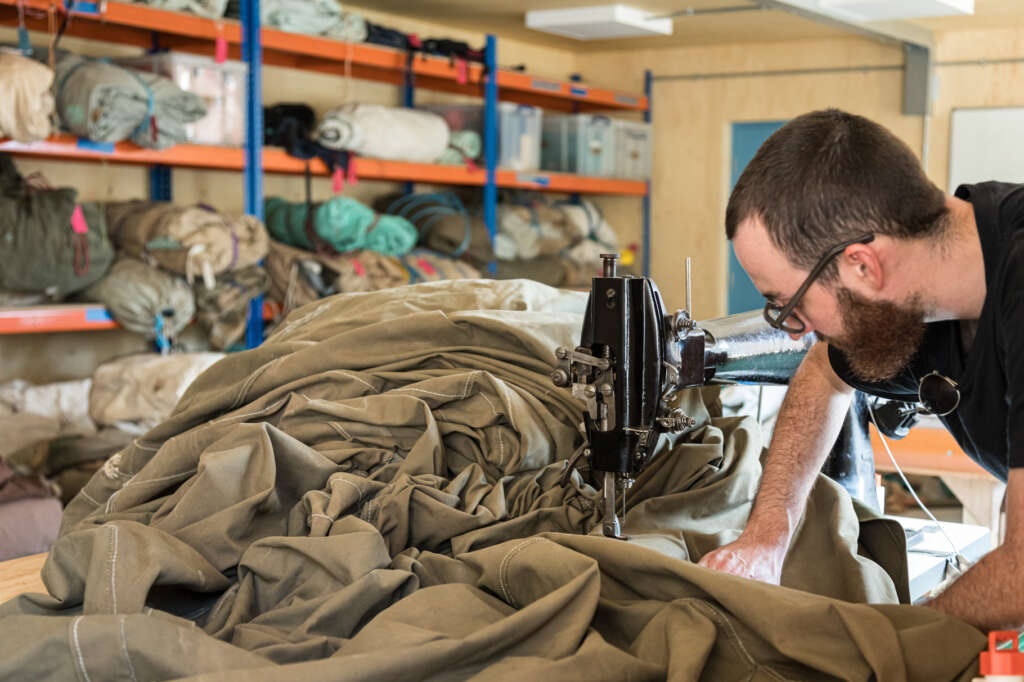
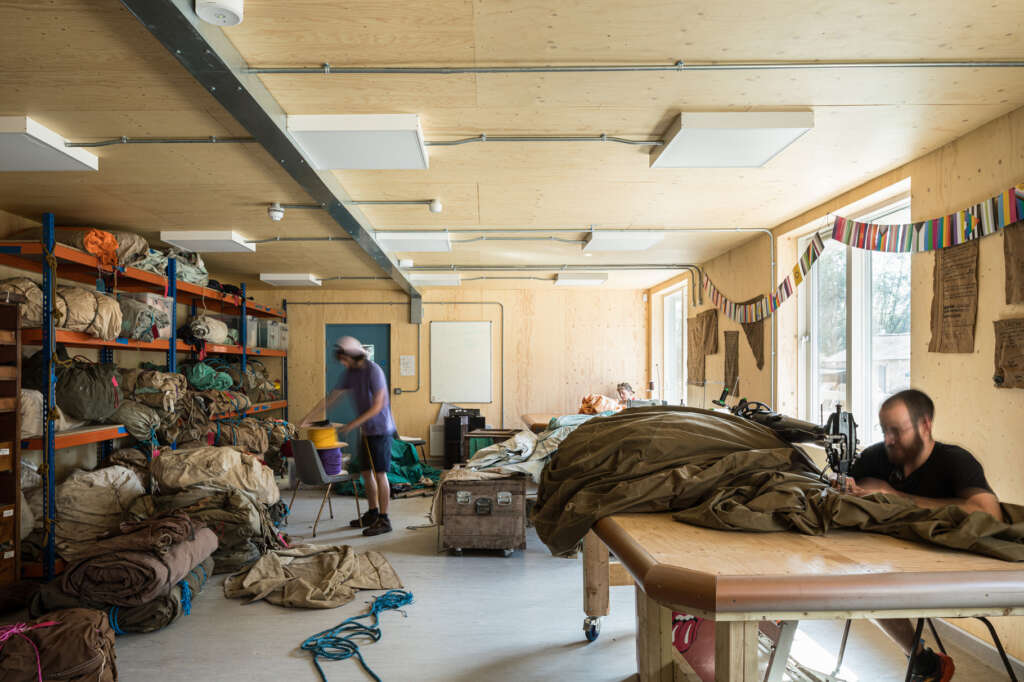
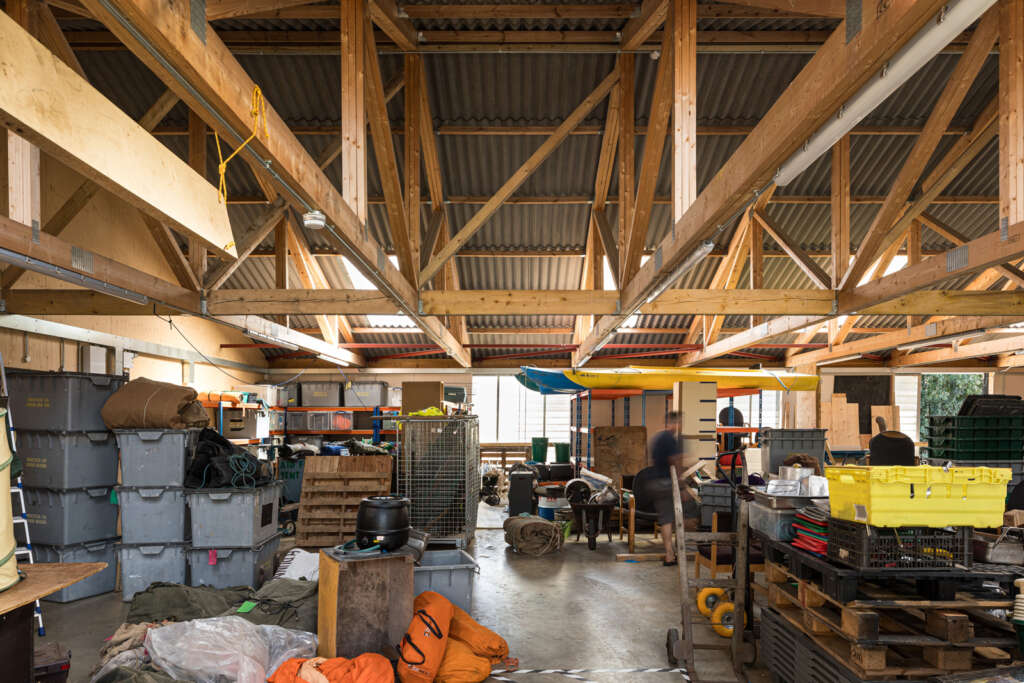
The Big Roof has been oriented to face the evening sun and the campfire circle. Hardstanding around the perimeter of the building, a raised floor level and sliding doors allow for easy drop-off and loading.
Volunteers camp in the woodland adjacent, planted by FSC as part of their long-term plan for the site. The community’s ethos is one of environmental stewardship, with a commitment to reducing its environmental footprint – minimal trees were removed in the construction of the new building.
The collective nature of The Big Roof extends to the design team, which brought together Mole Architects and Invisible Studio – with Charley Brentnall of Xylotek contributing on early proposals. Meredith Bowles (Mole) and Piers Taylor (Invisible Studio) have long collaborated on the Studio in the Woods summer workshops, where participants would camp for a long weekend’s timber construction programme.
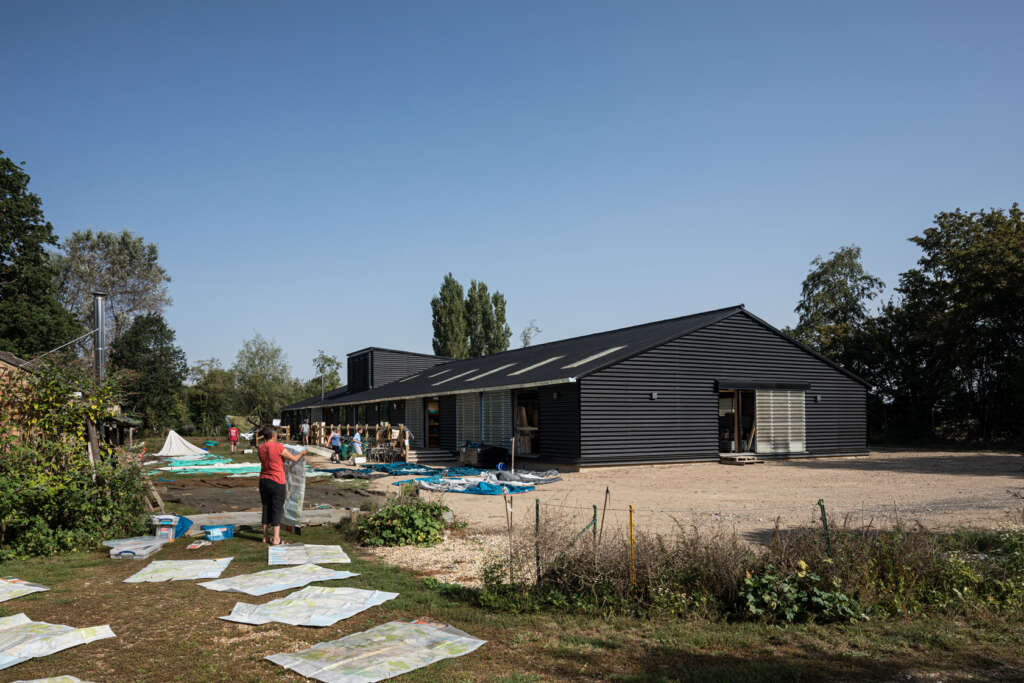
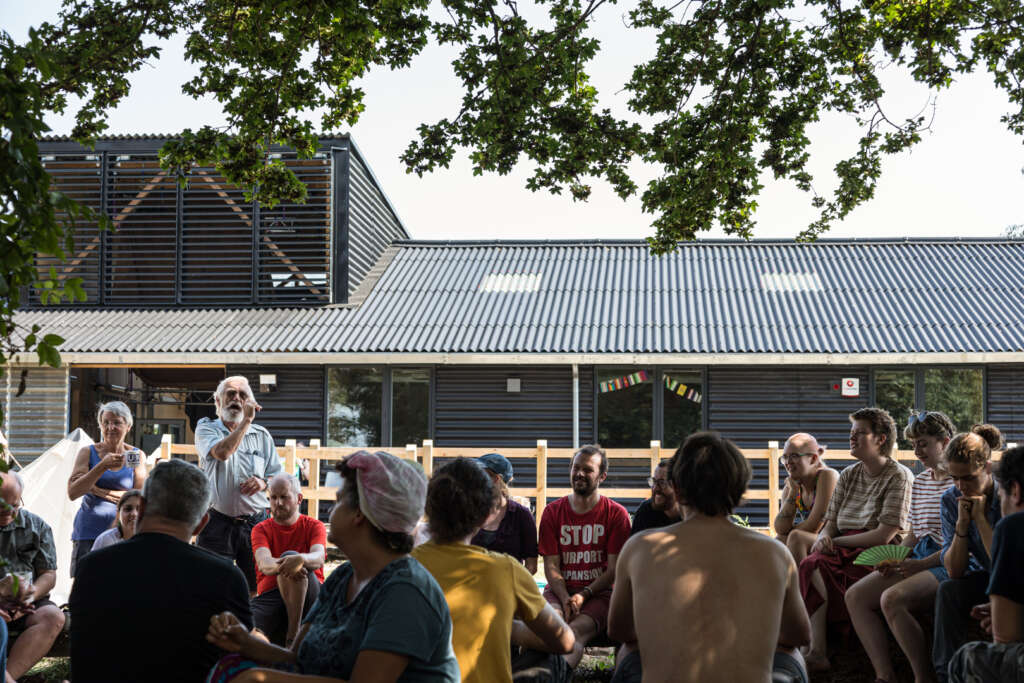
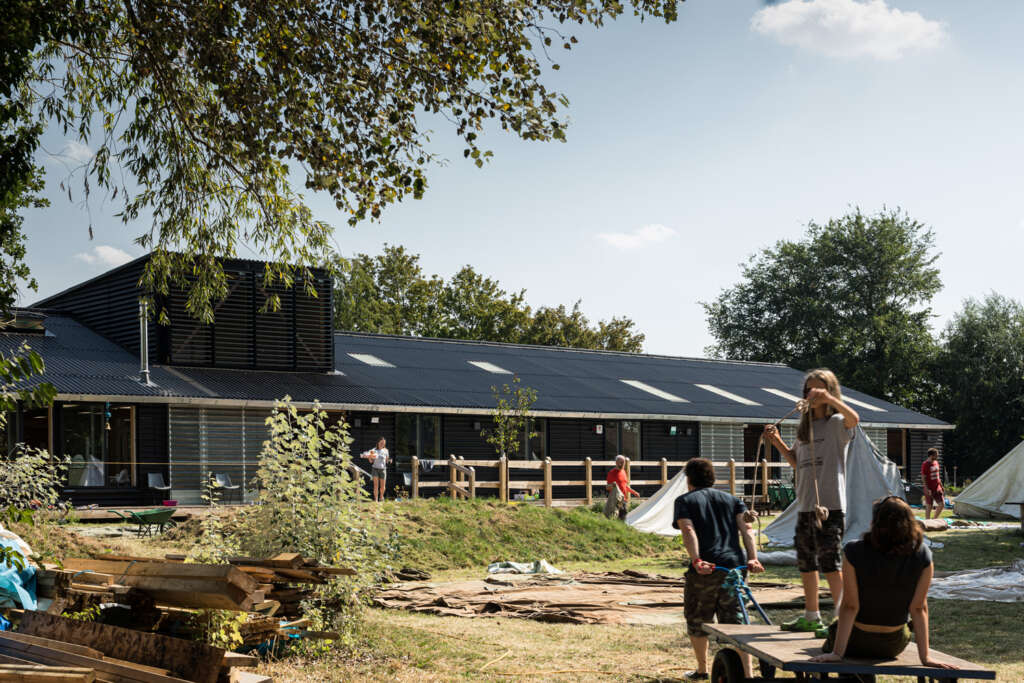
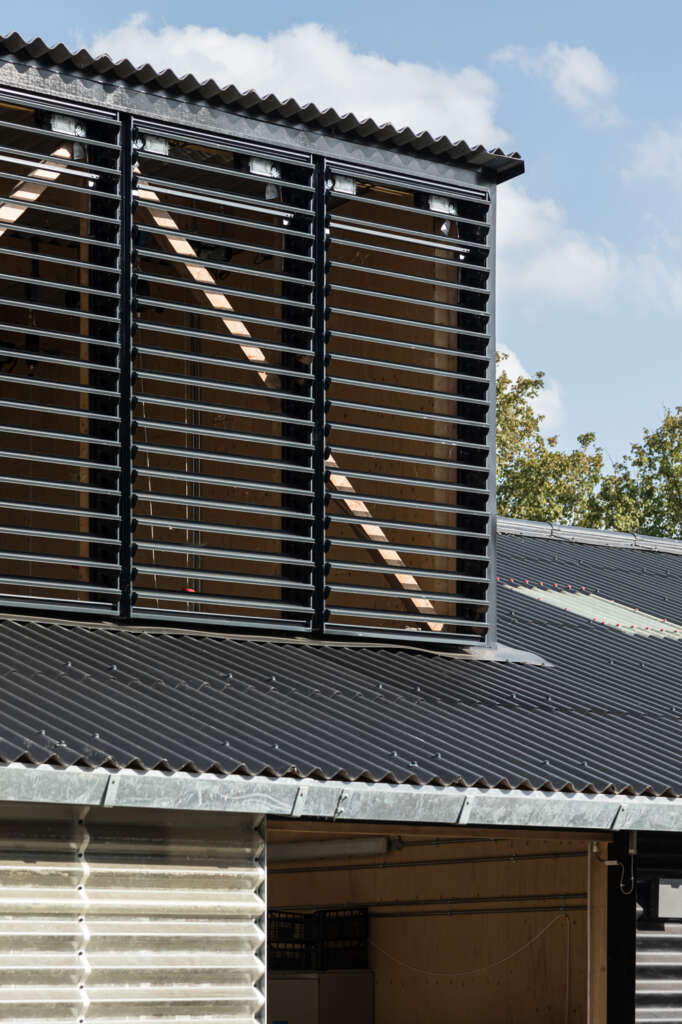
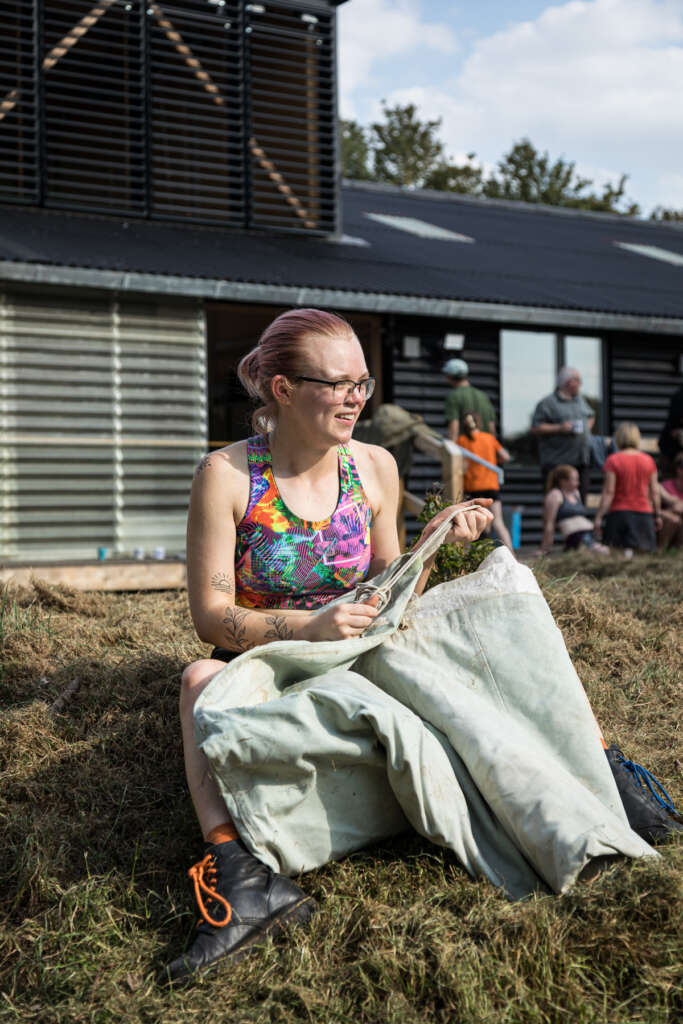
Alice Hamlin, Mole Architects, said:
“The design process for Forest School Camps has been collaborative and rewarding, with detailed input from volunteers shaping the end result into a welcoming building that’s designed around its use. The resulting building is basic but generous, making working weekends for volunteers more of a pleasure and less of a chore.”
Piers Taylor, Director, Invisible Studio, said:
“The ‘Big Roof is really simple and draws on our collective appreciation of no-nonsense agricultural structures that are absolutely direct and frugal in their lack of embellishment. It is a really interesting demonstration of how this type of building can use timber rather than the default option of steel. The change from a steel frame to timber is one of the most beneficial carbon savings it is possible to make in a building, and here – through design – the frame also proved to be cost effective, minimising arguments for using steel.”
Sophie Fraser Hafter, FSC Stores Development Committee, said:
“The realisation of The Big Roof at Haddenham is the culmination of a huge amount of collective work, considerate and innovative design, resulting in the construction of a wonderful building that supports FSC’s ability to create magical adventures for children out in the field. The Big Roof has not only given us a modern facility where we can store, maintain and repair all our kit, but also a welcoming base for the Forest School Camps community to work, train, and socialise for generations to come. Mole and Invisible’s design has created an efficient and successful space for volunteers that reflects the values of FSC. The use of timber, simple forms and light resonate with the charity’s emphasis on nature and the elements, and the central lantern space allows users to gather and gives visual connections across the building and around the site.”
Anne Willcocks, FSC Fundraising Committee, said:
“Wow! Thrilled by the building. Now we can mend those tents, store all the wellies and cooking pots and go on creating the magic of a community in a remote field for more generations.”
Project Details
- Location: Forest School Camps, Hill Row, Haddenham, Cambridgeshire
- Client: Forest School Camps (FSC)
- Site: 0.75 Ha
- Gross internal area: 745m²
- Value: £1.21 million
- Funding: FSC reserves and fundraising
- Schedule:
- Appointment April 2020;
- design phase April 2020-November 2020;
- construction May 2021-May 2023;
- official opening May 2023
- Architect: Mole Architects and Invisible Studio
- Project Architect: Alice Hamlin, Mole Architects
- Contractor: Millcam
- Structural engineer: Built Engineers
- M&E: ALH Design
- Quantity surveyor: Sherriff Tiplady
- Photographs: © David Butler


